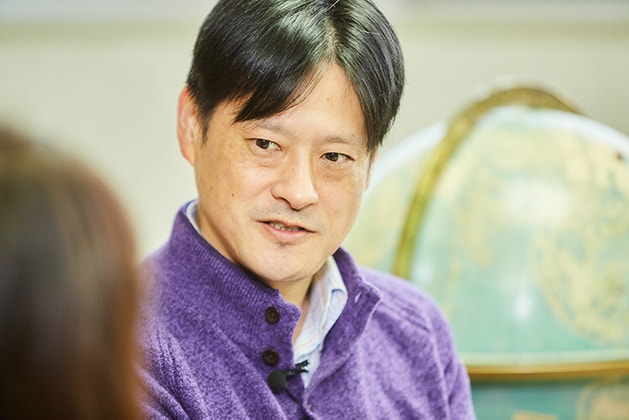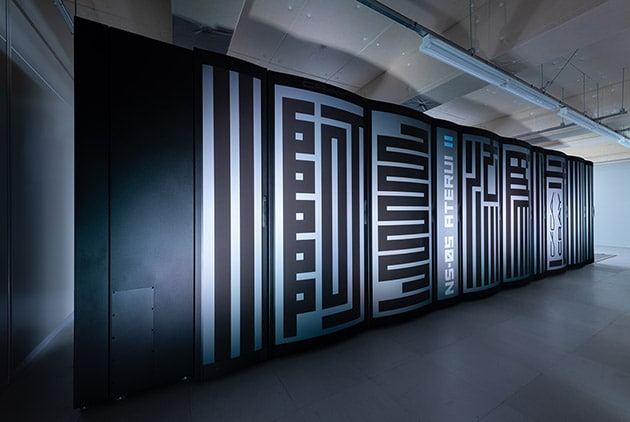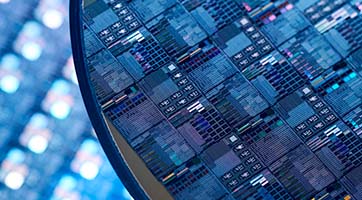
- Semiconductor Technology Now
Cross Talk
 |
Mie Nagata: I was particularly impressed with the beautiful reds in the image of the black hole.
Mareki Honma: Actually, we see it using electromagnetic waves, so the colors are not visible to humans. As a team, we discussed what colors to use and ended up settling on these as they looked the best.
Mie Nagata: When did you understand that the data you were looking at was a black hole?
Mareki Honma: The telescope observations were made in 2017 and the data was given to the research teams in each country at the same time in June 2018, and that’s when we started analyzing the data. It didn’t take long. In fact, we knew we had the shadow of a black hole in about 30 minutes. Prior to that, we had practiced analyzing data from different astronomical objects many times. When it was finally the real thing, the work went very quickly.
Mie Nagata: How did you feel at the time?
Mareki Honma: Lots of air punches! The 10 years of hard work finally paid off. Of course, we celebrated with a few drinks that night.
Mie Nagata: I bet they tasted good. [laughs]
Telescope Magazine: Professor Honma, you made the announcement of the results yourself in April 2019. What response were you expecting?
Mareki Honma: I was very nervous ahead of the announcement. I wasn’t sure how well I could explain the significance of the image. Everyone has already seen great vision of black holes using computer graphics in movies, etc. Despite this being the real thing, all we could show them was a blurred photo. I was quite concerned about how it would be received.
 |
Mie Nagata: But people were impressed.
Mareki Honma: I think I was able to convey the significance thanks to the support of the media, and the level of interest and passion in the general public, and their depth of knowledge. I was pleased with how well the children understood. Thanks also to people like yourself at planetariums, helping many people understand the significance of what we had.
Roles of telecommunications and semiconductor technologies
Telescope Magazine: Telecommunications and semiconductor technologies were also important for successfully observing and analyzing the black hole, weren’t they?
Mie Nagata: With data coming from a lot of radio telescopes, you must have had an enormous volume of data. How did you handle it all?
Mareki Honma: The data volume was so huge that the internet lines were unable to keep up. Some of the telescopes are also located in areas without internet access, so we had to carry all the data on hard disk drives to America and Germany where the processing was done. The processed data was then sent to Japan and other countries where the independent analyses were conducted.
Mie Nagata: If telecommunications technologies develop further in the future, with 5G and other networks, will that make the research easier?
Mareki Honma: Yes, dedicated lines of about 100 Gbps or so will enable more efficient analysis and research.
Mie Nagata: Supercomputers also played an important role, didn’t they?
Mareki Honma: Here at the Mizusawa campus, we used the ATERUI II*3, a supercomputer dedicated to astronomy, together with existing theories to simulate the image of what a black hole shadow would look like if photographed (figures 4 and 5).
 |
Mie Nagata: What was the result of that simulation?
Mareki Honma: It was very similar to the actual image we captured. It proved that the theories were not wrong, and in fact also proved that Albert Einstein’s original theory of general relativity, which predicted the presence of black holes, was correct.
Mie Nagata: What about semiconductors? How important are they in your research?
 |
Mareki Honma: There is a close relationship between our research and semiconductor evolution. Imaging a small dark astronomical object requires lots of data, and processing that data requires semiconductors with fast processing speeds.
For example, sampling chips are important components when digitally processing the electromagnetic waves received. And when we combine data as well, we use computer clusters where CPU performance and quantity are both important.
We can only do what currently available technology levels allow us to do, so if semiconductor technologies become more advanced, it expands the bandwidth and makes even darker objects visible to us. We are very much looking forward to more technological innovations in the future.
Footnotes
- *3
- 3. ATERUI II: Located at the Mizusawa VLBI Observatory, ATERUI II is a working supercomputer dedicated to astronomy. Sometimes called a “telescope for theoretical astronomy,” this supercomputer is able to virtually reproduce and compute a range of astronomical phenomena. We started, and are currently continuing, shared use of ATERUI II on June 1, 2018. It has six times better computing performance than ATERUI, first commissioned in 2013, and three times better computing performance than ATERUI had after its October 2014 upgrade. The name comes from a man called Aterui who was the chief of a group of Emishi (an indigenous people of North Japan) who lived near Mizusawa in Iwate Prefecture about 1,200 years ago. He was a hero who courageously led his people in battle against the Imperial Court.



















